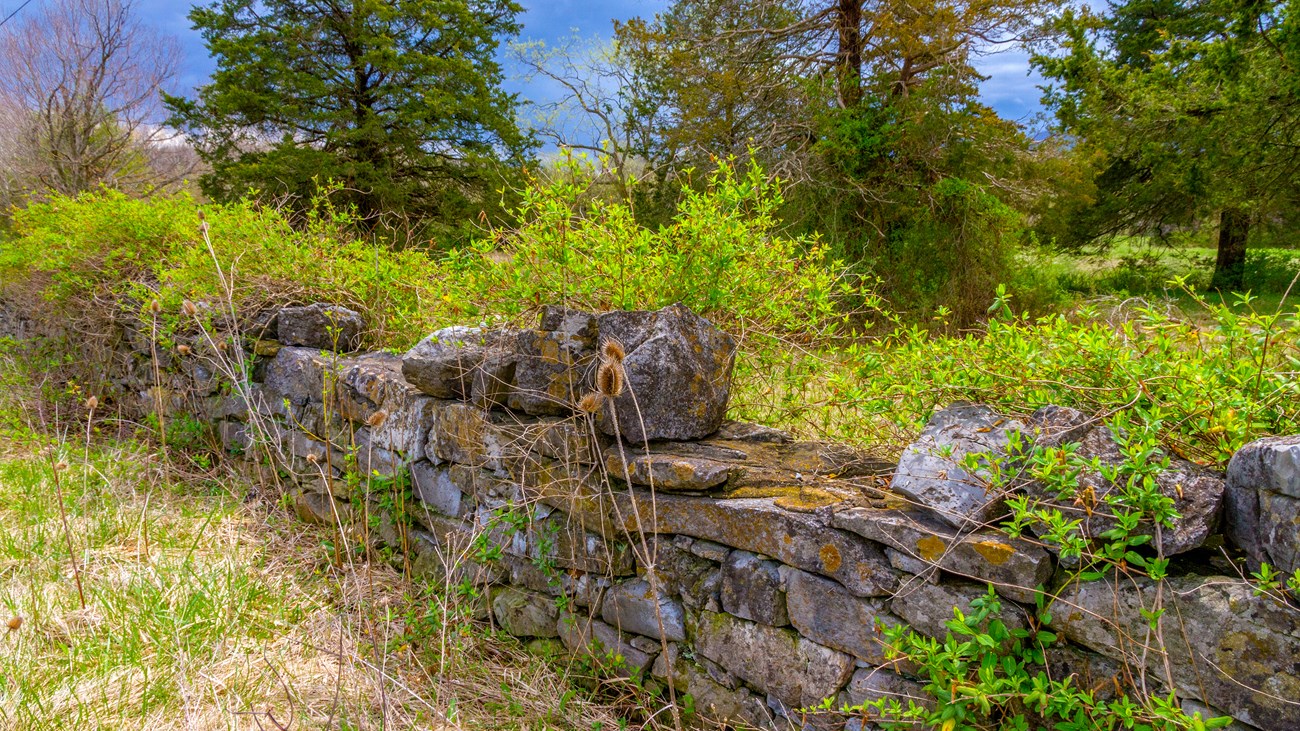Last updated: December 3, 2025
Article
Geology of the Shenandoah Valley

NPS Photo by Ann & Rob Simpson
Underground and surface forces, acting over many millions of years, created the Shenandoah Valley and its surrounding hills and ridges. These long, slow processes continue today as the Valley region gradually weathers, erodes, levels, and deposits soil.
Mountain & Valley Building
About half a billion years ago, the rocks that now make up the Shenandoah Valley solidified from ancient tidal flat sediments into vast, horizontal layers of limestone, shale, sandstone, and dolomite.
Colliding Continents
When two continental plates, the North American Plate and African, met about 400 million years ago in a series of grinding, mountain-building collisions. The limestone, shale, sandstone, and underlying volcanic rocks folded upward into the ridges and mountains that now form the Appalachian Mountains in North America and the Atlas Mountains in Africa.
Range of High Mountains
After 100 million years or so of collisions, the Appalachians grew to elevations possibly as high as 20,000 feet above sea level. The North American and African plates began to separate and have moved farther apart ever since. Although no longer near the tectonic boundaries, Virginia still has active fault lines. Seismic equipment and people in the Shenandoah Valley sometimes detect small earthquakes.
Weathered Ridges, Fertile Valleys
Three hundred million years of erosion have left most Appalachian hills and ridges lower than 5,000 feet above sea level. Rain, wind, ice, and sun broke down the mountains’ overlying limestone, shale, and sandstone rocks. These fragments and particles washed downhill and settled into valleys between the ridges. These sediments give Shenandoah Valley floor its rich, limey, fertile soil.
Surrounded by Hills & Ridges
The remaining ridges of hard igneous granite and metamorphic gneiss, slate, and quartzite are the Blue Ridge Mountains, home to nearby Shenandoah National Park. The Blue Ridge is long group of hills that are the eastern boundary of the wide Shenandoah Valley. The hills and ridges of the Allegheny Mountains formed the Valley’s western boundary, which still have most of their overlying sedimentary rock.
Mountain in the Middle
The Shenandoah Valley is now about 150 miles long. It averages about 30 miles wide. Bisecting the Valley is Massanutten Mountain, a long ridge of about fifty miles. Like the Alleghenies, it also still has much of its overlying sedimentary rock. Sediments of limestone, shale, and other rocks and minerals layer the Valley floor, giving it its rich, limey soil and agricultural fertility. Three hundred million years of erosion have left most Appalachian hills and ridges lower than 5,000 feet above sea level.
Limestone & Karst Terrain
The Valley’s abundant limestone is evidence that the area was once under ocean water, long before the tectonic plates collided. Limestone forms in warm, shallow seas when generations of tiny sea creatures die and accumulate on the ocean floor, later to compress into solid rock.
Karst
Because of its limestone base, the Shenandoah Valley is karst, a terrain type with distinctive landforms and water resources. Slightly acidic water wore through the bedrock over many millions of years, leaving caves, caverns, and sinkholes. Streams and springs disappear and reappear over time.
Aquifers
Water that filters through the rocks collects in underground reservoirs, or aquifers. Aquifers are underground rock layers filled with groundwater in the spaces between fractured limestone, silt, gravel, and sand. Aquifers closer to the surface, used for irrigation and drinking water, are re-charged by rainwater. They are very useful but also extremely vulnerable to contamination.
Caves & Caverns
The water that dissolves limestone and other soluble rocks in the Shenandoah Valley leaves behind caves and caverns. In some caves and caverns, the deposits of dissolved minerals left by dripping water make the features of stalactites, stalagmites, and columns. Luray Caverns, a National Natural Landmark in the Valley, is ornately decorated with cascades, columns, stalactites, stalagmites and pools.
Other Rocks & Minerals
Many rocks and minerals occupy the Shenandoah Valley besides limestone. Other sedimentary rocks in the region are sandstone, shale, and coal. There are igneous rocks like granite, gabbro, and basalt, and metamorphic rocks like slate, gneiss, and quartzite. Manganese, iron ores, zinc, lead, sulfur, gypsum, and pyrite are relatively common Shenandoah Valley minerals. The Valley yields small amounts of oil and natural gas.
Also present is red clay, an oceanic sediment with iron oxide, along with fossils of sea creatures like brachiopods and trilobites.
